Game: Codebreaker Puzzle 1000! ENG & JAN
Genre: Puzzle
System: Nintendo Switch
Developer|Publisher: Success Corp
Age Rating: UK 3+ | US Everyone
Price: US $9.49| UK £6.99 | EU €7,79
Release Date: February 25th, 2021
Review code used with many thanks to Success Corp!
It’s not every day that a word game comes my way on the Nintendo Switch, much less a word game in two language sets. Codebreaker Puzzle 1000! ENG & JAN contains 1,000 English crosswords and 1,000 Japanese crosswords, and the two language sets have no relation to each other. It’s bang for your buck if you’re looking for straightforward word puzzles, but not if you’re expecting anything innovative.
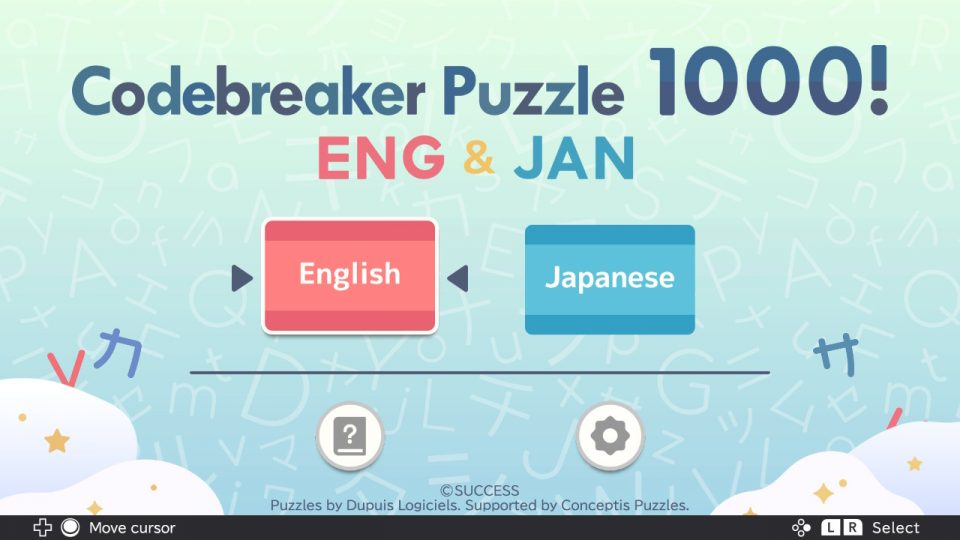
Breaking Codes Can Be Relaxing
Codebreaker isn’t just a fancy name; it refers to the type of crossword puzzle often called “code breakers.” Instead of giving you written clues, blank cells in the crossword are numbered. Each number corresponds to only one alphabet, and it’s your job to figure out which numbers correspond to which alphabets. Hence, like breaking a code.

It works like this (see screenshot above): if you think a cell numbered zero should be the letter “O” inserting that alphabet will also insert “O” into every cell that’s numbered zero. This makes the puzzle both easier to solve (because it limits your choices), while at the same time challenging you to consider multiple words simultaneously.
Though a timer encourages you to solve puzzles as quickly as possible, there are no repercussions for taking a long time, so Codebreaker is a relaxing game.
If you’re stuck, you can reveal the correct answer for a selected cell. But you have to take a penalty of +10 seconds to your timer, and this penalty increases with each answer-check. Not that it matters, unless you’re competing with a family member.
Now, if only these puzzles could be solved by touchscreen, but alas, only Joy-Con controls are available.
English: Easy for Native Speakers
The puzzles range in difficulty from 1 to 4 stars. The easiest puzzles are tiny crosswords, and you only have to work with, say, two alphabets. The hardest puzzles make you work with ten or more alphabets.
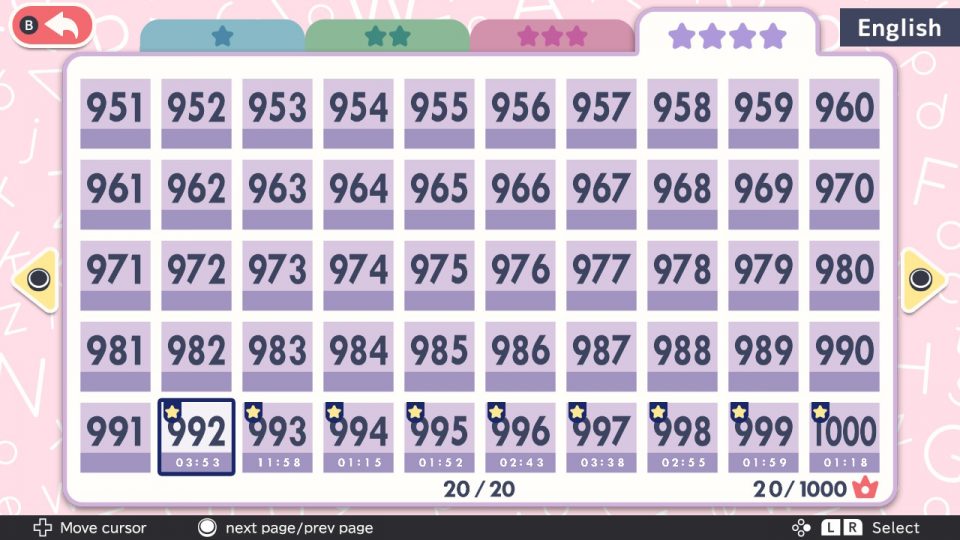
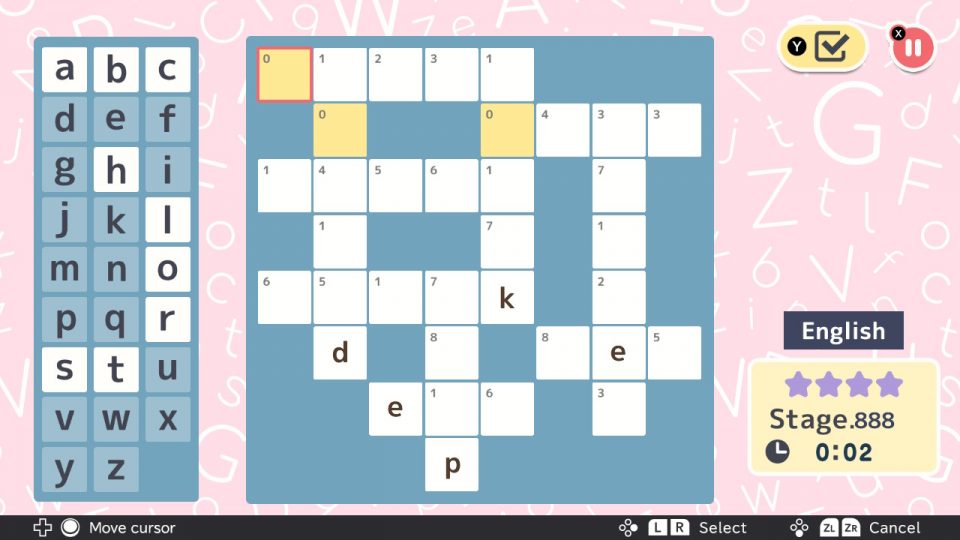
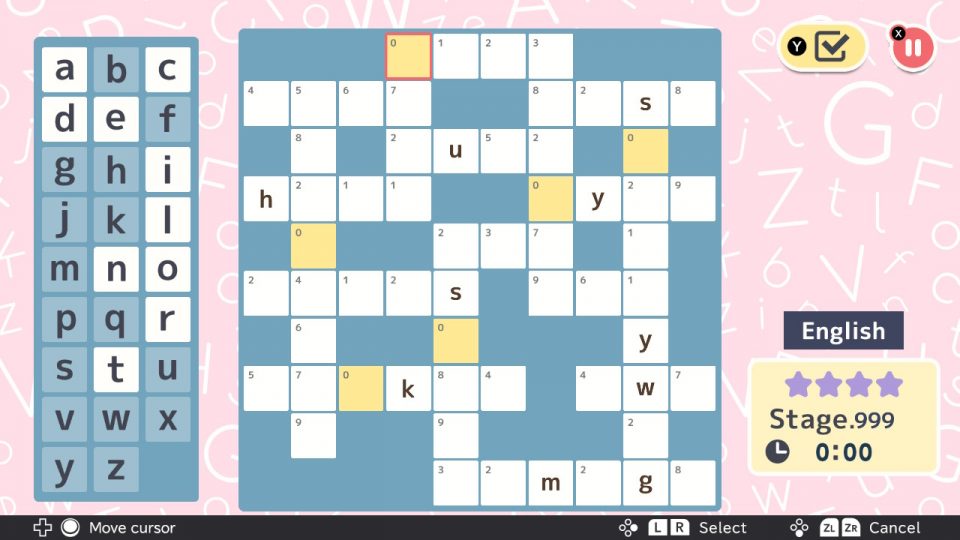
As a native English speaker, the English puzzle set felt a little too easy for me, so I decided to work backwards from Puzzle #1000. For the 4-star puzzles I tried, they were still quite easy and could be completed in 1 to 3 minutes. Only one puzzle took me 10 minutes.
It’s nice that I could work through the puzzles quickly, but this also left me feeling underchallenged and a lack of motivation to keep playing. I think these puzzles might be fun for kids but would not engage most adults for hours on end. Codebreaker would be alright, though, for adults who were looking specifically for this sort of puzzle to enjoy on a quiet vacation or before bedtime.
Japanese: Not the Best Study Aid
As for the Japanese puzzle set, I had a different experience altogether because I’m not a native speaker or fluent. For context, I’m an intermediate learner (around N2 level of the JLPT language exam) and would find it hard to read Japanese newspapers. So I’m evaluating the Japanese puzzles from the perspective of a language student.
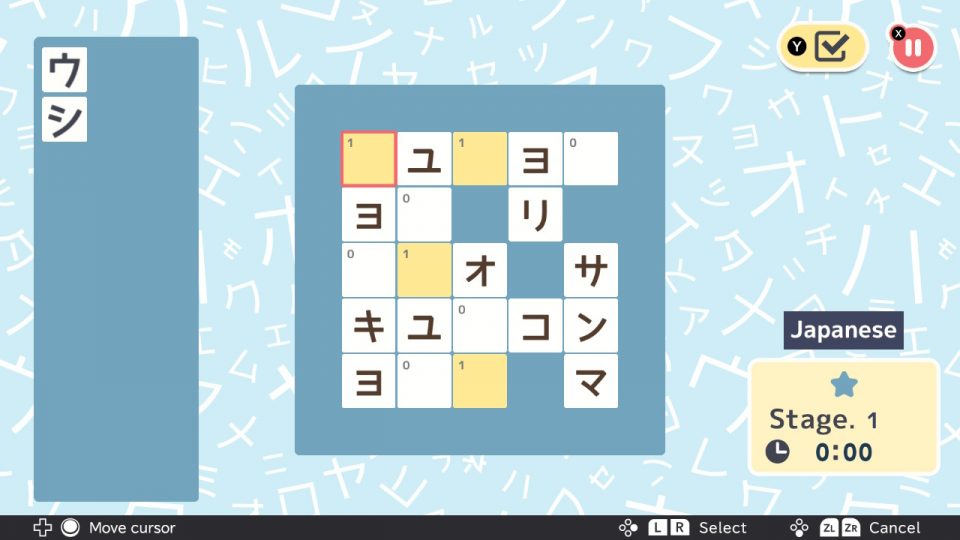
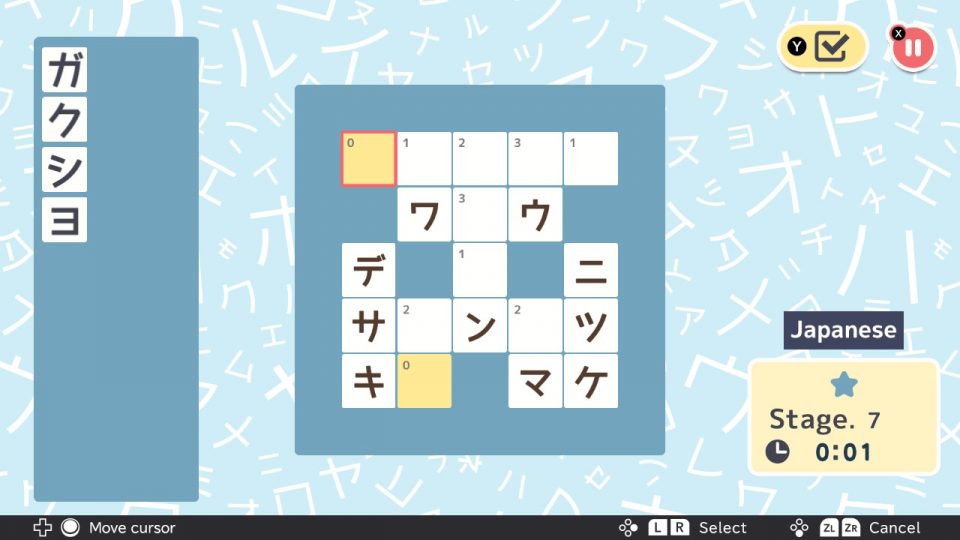
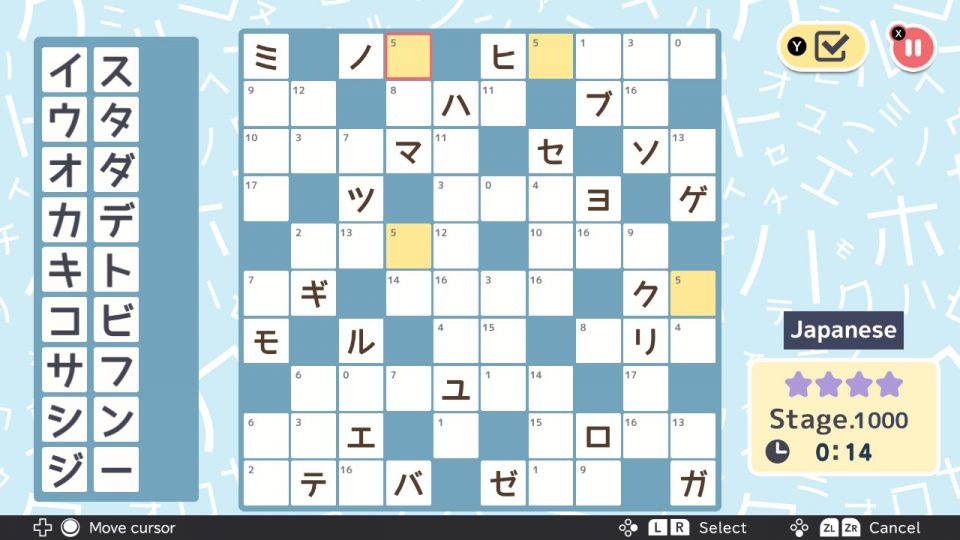
The Japanese set was difficult for me. And, unfortunately, I don’t think Codebreaker motivates me to learn new words or have my vocabulary knowledge tested in this way. The main reason is that the game uses katakana (one of the three Japanese writing scripts) to spell out words. I have difficulty mentally processing words in katakana much more than words in hiragana or kanji (the other two Japanese writing scripts). But more importantly, if I want to study new words, I prefer to learn them in kanji form (Chinese characters), which is the form they’re often written in.
Now, crosswords are not a bad way to learn new words and can, in fact, be pretty fun. But if I wanted to learn via crossword, I would want puzzles to be thematic. In other words, they would need to be words related to a theme such as “medical words” or “fruits” or “vehicles.” But in Codebreaker, words within a puzzle have no thematic relation; they’re just a bunch of random words.
So, I’m doubtful about how fun or useful Codebreaker would be to most learners of Japanese who aren’t advanced or fairly fluent.
A Little Language Issue
It’s important to mention that I’ve encountered NO mistakes in the puzzles themselves so far. Therefore, what I’m about to say should not diminish your view of the game. Two very minor things caught my attention.
First, odd usage of English in the tutorial page. For example, the game has two simple rules, thus explained: “Rule 1: Fill in the cell and establish words from vertical and horizon. Rule 2: Same alphabet in only same number of cell.” Now, I understand what these sentences are trying to convey, but it’s ironic that a language game has glaring grammatical mistakes in its tutorial.
I would have encouraged the developer to get a reliable native speaker to proofread the game’s tutorial. Considering there’s so little text to proofread in the tutorial, I’m sure it wouldn’t cost them very much. The same can be said for the game’s eShop description.
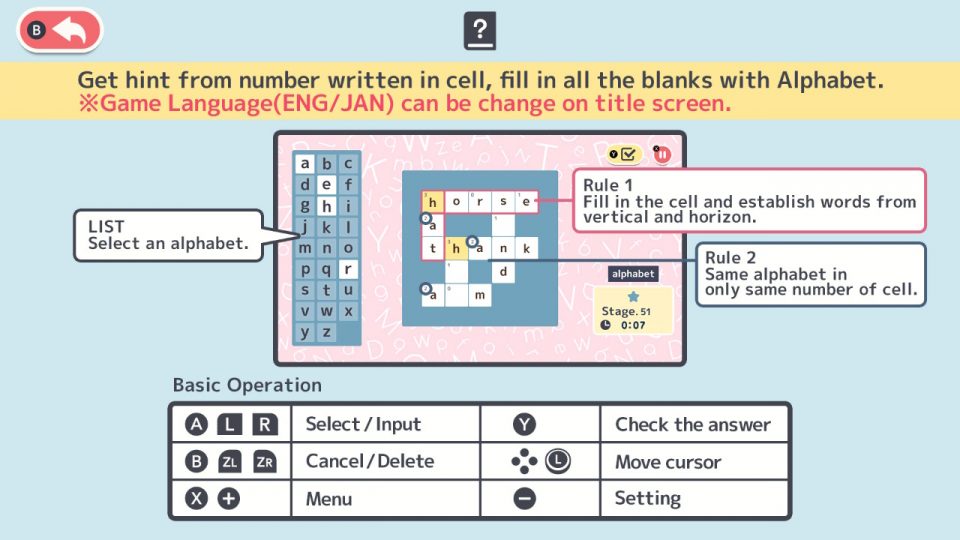
Secondly, I keep wondering why the game’s title uses the abbreviations ENG & JAN. I’ve never encountered “JAN” as an abbreviation for “Japanese language.” I’ve only seen “JA,” “JP,” and “JPN,” so the title struck me as slightly odd.
These are minor things, and I’m pointing them out more for the developer than for gamers to take note of.
Conclusion
The amount of puzzles offered by Codebreaker Puzzle 1000! is impressive: one thousand puzzles per language set. Personally, the English puzzles were too easy for me, while the Japanese puzzles were difficult and not my idea of a good learning tool. But if you already like cipher or codebreaker crosswords, you might still enjoy this simple, straightforward version.
As a game, I would have given a “Not Sure” rating, but since Codebreaker didn’t raise my hopes with great promises of fun or learning, I wasn’t let down (since I had low expectations). It is pretty barebones, so think of Codebreaker less as a game and more as a digitized book of crosswords.
Final Verdict: I like it




